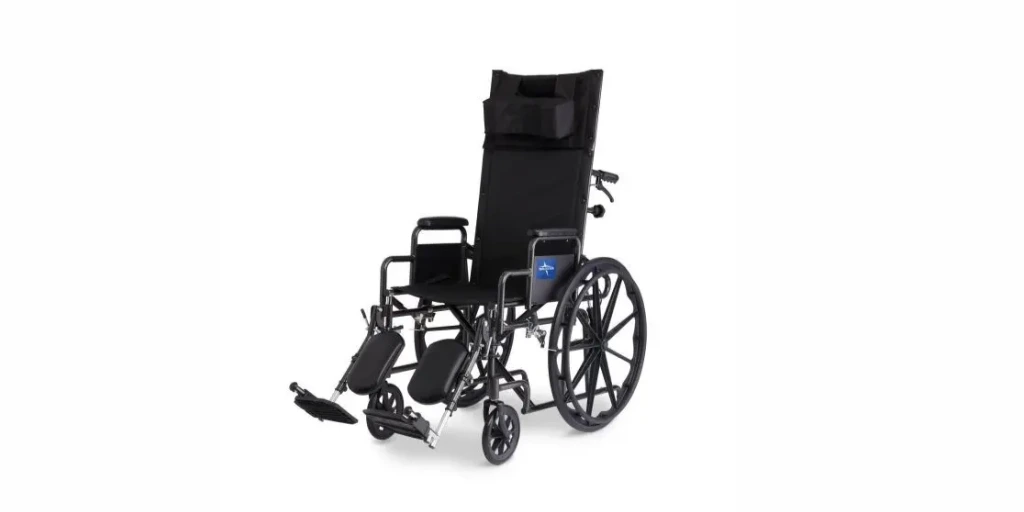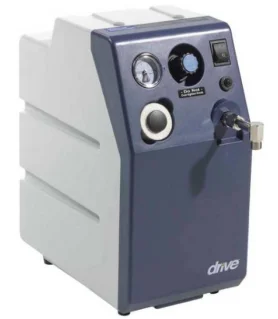Manual Wheelchair Maintenance: A Quick Checklist For Longevity and Safety
Key Takeaways
- Daily/Weekly Checks: Regularly wipe down the frame and clean the wheels to prevent dirt buildup and corrosion.
- Tires: Check the pressure of pneumatic (air-filled) tires weekly to ensure proper function and prevent punctures.
- Lubrication: Apply a manufacturer-recommended, silicone-based lubricant to moving parts to reduce friction and eliminate squeaks.
- Brakes & Bolts: Test your brakes regularly to confirm they engage firmly and periodically tighten all visible nuts and bolts to prevent loosening from daily use.
- Professional Care: Schedule an annual professional maintenance check-up to address complex issues and ensure optimal performance

A manual wheelchair is a vital tool that provides independence and mobility. To ensure its longevity, optimal performance, and user safety, consistent care and maintenance are essential. Neglecting regular upkeep can lead to unexpected breakdowns, compromise comfort, and even pose risks. This guide provides a straightforward overview of the key maintenance practices needed to keep your manual wheelchair in excellent condition for years to come
Daily and Weekly Inspections
Simple, regular inspections can prevent minor issues from becoming major problems. Make these checks a part of your routine to maintain your wheelchair’s function.
- Keep It Clean: Use a damp cloth and mild soap to regularly wipe down the wheelchair frame, push rims, armrests, and footrests. This removes dirt and sweat, which helps prevent corrosion and keeps your chair looking its best.
- Clean the Wheels: Pay special attention to your wheels and casters, removing any hair, lint, or debris that may be wrapped around the axles. This ensures proper grip and prevents dirt from being tracked indoors.
- Inspect for Damage: Perform a visual scan of the entire wheelchair for any signs of damage, such as cracks in the frame, bent components, or frayed upholstery. Early detection can prevent more costly repairs.
- Check for Loose Parts: Gently shake or test various parts of the wheelchair to identify any unusual wobbles, loose components, or creaking sounds
Deeper Maintenance for Optimal Performance
Beyond basic cleaning, certain components require more specific attention to ensure smooth operation and safety.
- Tire Pressure and Condition: If your wheelchair has pneumatic (air-filled) tires, check the pressure at least weekly with a tire gauge. Under-inflated tires make pushing more difficult and increase the risk of punctures and uneven wear. Always follow the pressure recommendations printed on the tire’s sidewall. Examine tires for signs of wear, cracks, or embedded objects that could cause a flat.
- Lubrication: To reduce friction and eliminate squeaks, apply a silicone-based lubricant or a light machine oil (as recommended by the manufacturer) to all moving parts, including axle pins, folding mechanisms, and caster stems. Avoid using products like WD-40, which can attract dirt and are not suitable for long-term lubrication.
- Brake Checks: Regularly test your wheelchair brakes to ensure they engage firmly and hold the wheels securely. If the brakes feel loose or the chair moves when they are applied, they need to be adjusted. Proper brake function is critical for user safety.
- Tighten Nuts and Bolts: Everyday use and vibrations can cause nuts and bolts to loosen over time. Periodically check all visible fasteners with the appropriate tools and tighten them, being careful not to overtighten.
- Wheel Alignment: Visually inspect your wheels to ensure they are properly aligned. Misaligned wheels can cause the chair to pull to one side and lead to uneven tire wear. If you suspect misalignment, it is best to consult a professional
Long-Term Care Strategies

Implementing these long-term strategies can significantly extend the lifespan of your manual wheelchair.
- Upholstery Care: Clean your seat and backrest upholstery regularly according to the manufacturer’s instructions to remove spills and prevent odors. Also, check for any tears or excessive wear that could impact comfort or support.
- Proper Storage: Store your wheelchair in a clean, dry place away from extreme temperatures and moisture. This prevents rust, mildew, and material degradation.
- Weight Limits: Always adhere to the manufacturer’s specified weight capacity for your wheelchair. Overloading can stress the frame and components, potentially leading to damage and unsafe operation.
Even with diligent care, all equipment has a lifespan. If your manual wheelchair has reached the point where it is no longer safe or functional, it may be time for a replacement. At UniversalMed Supply, we are here to help. Our team of experts can assist you in finding a new manual wheelchair that meets your needs and can guide you through the process of determining if it’s covered by your insurance. For personalized assistance, please do not hesitate to reach out to us directly at 972.228.1820



